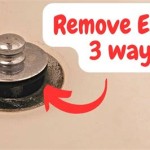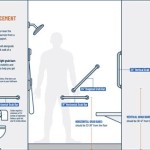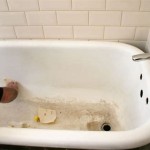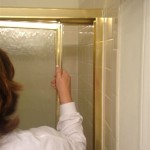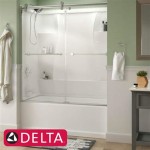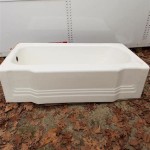Vintage Cast Iron Bathtub Value: A Guide to Understanding Their Worth
Vintage cast iron bathtubs, once ubiquitous in homes, are now considered desirable antiques with unique charm and historical significance. Their sturdy construction, timeless design, and ability to retain heat have made them enduringly popular. However, understanding the value of these antique tubs requires a nuanced approach, taking into account various factors that influence their price. This article provides insights into the key elements that contribute to the value of vintage cast iron bathtubs.
1. Age and Origin: The Foundation of Value
The age and origin of a cast iron bathtub play a crucial role in determining its value. Generally, older tubs, particularly those dating back to the 19th century, are highly sought after by collectors and enthusiasts. Their craftsmanship, materials, and historical relevance make them valuable treasures. Tubs from well-known manufacturers, such as Kohler, Standard Sanitary, and American Standard, often command higher prices due to their reputation for quality and design. For example, a clawfoot bathtub made by Kohler in the early 1900s could be significantly more valuable than a comparable tub produced in the 1950s.
Authenticating the age of a vintage bathtub can be challenging, but it is essential for establishing its value. Look for clues like manufacturer's marks, patent dates, and style characteristics specific to certain periods. It's advisable to consult with an antique appraiser or a specialist in vintage plumbing fixtures for a professional assessment. Documents like original purchase records or old blueprints can provide irrefutable proof of age, significantly increasing the bathtub's worth.
2. Condition: A Reflection of Historical Use
The condition of a vintage cast iron bathtub is a critical factor in determining its value. Tubs in excellent condition, with minimal wear and tear, are highly desirable. They are often treated as prized possessions and can command top dollar. However, even tubs with some signs of aging can still be valuable, depending on the extent of the damage and the overall aesthetic appeal. Factors like chipped enamel, rust spots, and cracks can lower the value, but restoration options are available to enhance their condition.
The presence of original fixtures, such as faucets, drain covers, and overflow plates, can significantly enhance a bathtub's value. These components often reflect the original design and craftsmanship of the tub, adding to its historical significance. However, if the fixtures have been replaced or are missing, it's important to consider their impact on the overall aesthetic and value of the tub.
3. Style and Design: A Timeless Appeal
The style and design of a vintage cast iron bathtub are crucial factors influencing its value. Clawfoot tubs, with their elegant curves and ornate feet, are particularly popular and command high prices. Other sought-after styles include pedestal tubs, slipper tubs, and roll-top tubs, each with its own unique charm and historical significance. The decorative elements, such as the style of the feet, the presence of handles, and the overall design aesthetic, contribute to the bathtub's aesthetic appeal and overall desirability.
The choice of materials used in the bathtub's construction also plays a role in its value. Cast iron tubs often feature porcelain enamel, which provides a durable and aesthetically pleasing finish. Tubs with original enamel in good condition are highly prized. However, tubs with chipped or scratched enamel may require restoration, which can affect their value. The color of the enamel can also influence desirability, with certain shades, like antique white or cream, being particularly sought after.
4. Market Demand: A Fluctuating Factor
The demand for vintage cast iron bathtubs can vary depending on location, current trends, and the availability of specific styles and conditions. In areas where historic preservation is popular, antique tubs may command higher prices. Similarly, the rising popularity of farmhouse and Victorian-style decor has led to increased demand for certain styles of vintage bathtubs. However, market demand can fluctuate, influencing the value of specific tubs. It's important to research the current market conditions and consider factors like local preferences and the competition when assessing the value of a vintage bathtub.
While vintage cast iron bathtubs can be valuable investments, it's essential to consider their historical context, condition, and market demand when determining their worth. Professional appraisal from a qualified antique expert can provide a reliable estimate of a bathtub's value, and ensure you are making an informed decision.

Antique 5 Ft White Cast Iron Claw Foot Bathtub

Rare 6 Foot Cast Iron Clawfoot Tub With Center Drain Gs00312

Randolph Morris Charlotte 54 Inch Cast Iron Slipper Clawfoot Tub No Faucet Drillings Lg54sl0wsib

Vintage Cast Iron Clawfoot Tub For 2024

Rare Red 1893 Cast Iron Claw Foot Tub With Coating And Wood Trim

Heritage Cast Iron Classic Clawfoot Tub Rim Faucet Drillings

Antique Cast Iron Baths Tubs Victorian Enamelled Bath

Antique 5 Ft Long Porcelain Over Cast Iron Claw Foot Bathtub

Sandringham 70 Inch Cast Iron Pedestal Bathtub Continuous Rolled Rim No Faucet Drillings White

Cambridge Plumbing 72 Cast Iron Double Slipper Copper Broe Clawfoot Us Bath


